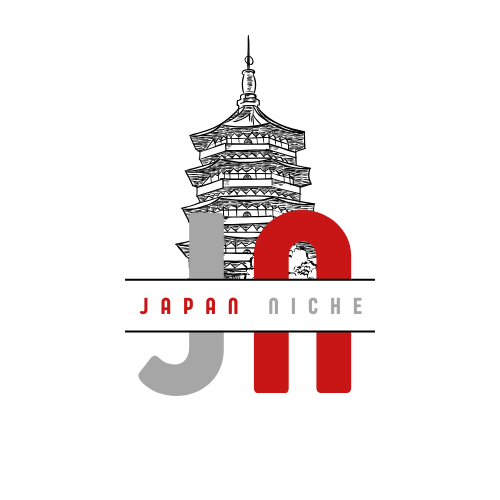I used to think Yukata and Kimono are the same thing but later I found out they are different. They are different in fabric and features. They are also different in case of when to wear and which events to wear. Fashion tells a story, and few garments carry as much cultural significance and beauty as Japan’s iconic Yukata and Kimono. Understanding the differences between these two traditional garments is an eye-opener into the heart of Japanese aesthetics. While both Yukata and Kimono share certain similarities, they are distinct in their use, appearance, and cultural context.
In this blog post, we’ll explore the unique features of each garment, when to wear them, and even how to style them in modern fashion. Let’s dive into the beautiful world of traditional Japanese attire!
What is a Kimono?
A Kimono is a traditional Japanese garment that has been worn for centuries. Historically, it was the everyday clothing for Japanese people, but today it’s reserved for special occasions due to its intricate design and craftsmanship.
- Historical Background: The Kimono dates back over 1,000 years, originating in the Heian period. The word “kimono” literally means “thing to wear.” Initially influenced by Chinese fashion, it evolved into the iconic silhouette we know today—long sleeves, a wide sash known as an obi, and beautiful, often hand-dyed fabrics.
- Key Characteristics: Kimonos are typically made from luxurious fabrics such as silk, brocade, and sometimes wool or linen. They feature long sleeves, a V-neck, and a straight, full-length cut. Kimonos are traditionally worn with layers, especially in colder seasons.
- When is it Worn?: Kimono is considered formal wear and is worn at weddings, tea ceremonies, festivals, and other significant events. It symbolizes cultural pride and can vary in formality based on the occasion.
- Types of Kimono:
- Furisode: Worn by unmarried women, featuring long sleeves.
- Tomesode: A formal Kimono for married women, with shorter sleeves.
- Houmongi: Semi-formal, worn by married and unmarried women at parties and ceremonies.
What is a Yukata?
The Yukata is often described as the casual sibling of the Kimono. It’s lighter, simpler, and has a more relaxed vibe, making it perfect for warmer weather.
- Origins: Originally, Yukata was worn as a bathrobe by Japan’s aristocrats in the Heian period. Over time, it became a staple summer garment for all classes.
- Key Features: Yukata is made from cotton or synthetic materials, making it breathable and lightweight—ideal for Japan’s hot summers. Unlike the layered Kimono, the Yukata is worn with fewer undergarments, and the obi is usually simpler.
- When is it Worn?: The Yukata is most commonly worn during summer festivals, fireworks displays, or casual evening strolls. You’ll also find it in traditional inns (ryokan) where guests wear them around the premises.
Yukata vs. Kimono: Key Differences
While Yukata and Kimono may look similar to the untrained eye, they have several important distinctions.
- Fabric and Seasonality:
- Kimono is often made from heavier, more luxurious materials like silk, making it suitable for formal occasions and cooler weather.
- Yukata, on the other hand, is lightweight and made from cotton, making it perfect for summer wear.
- Formality: Kimono is generally more formal and intricate, while Yukata is casual and easy-going. Think of the Kimono as the “evening gown” and the Yukata as the “summer dress.”
- Layering and Accessories: Kimonos are typically worn with multiple layers, and the obi can be highly decorative. Yukata, however, is simpler with fewer accessories, making it easier to put on.
- Pricing: Due to the materials and craftsmanship, Kimonos are generally much more expensive than Yukatas. A formal Kimono can cost thousands of dollars, whereas a Yukata is more affordable.
How to Wear a Yukata or Kimono
- How to Wear a Yukata:
- Put on the Yukata like a robe, ensuring the left side crosses over the right (the opposite is only used for funerals).
- Wrap the obi around the waist and tie it in a bow or knot at the back.
- Pair with geta (traditional sandals) for an authentic look.
- How to Wear a Kimono:
- Kimono requires several layers, including undergarments and a nagajuban (an inner robe).
- The obi for a Kimono is more complex and requires specific folding techniques, sometimes needing assistance to put on correctly.
- The Importance of the Obi: Both garments feature the obi, a wide sash, but in Kimonos, the obi is often more decorative and elaborate, requiring additional accessories like obijime (cord) and obiage (scarf).
When to Wear a Yukata vs. Kimono
- Yukata: Perfect for summer festivals, casual outings, and after-bath relaxation in traditional inns. It’s ideal for informal, warm-weather events and provides a laid-back, elegant vibe.
- Kimono: Reserved for more formal occasions like weddings, tea ceremonies, or important cultural festivals. Wearing a Kimono requires more attention to detail and often reflects the wearer’s social status or the occasion’s significance.
Styling Tips: Incorporating Yukata and Kimono into Modern Fashion
As Japanese fashion continues to inspire global trends, Yukata and Kimono are finding their way into modern wardrobes. Here’s how to incorporate these traditional pieces into your contemporary style:
- Yukata as a Statement Piece: Pair a Yukata with jeans or shorts for a relaxed yet stylish summer look. Opt for bright colors and bold patterns to make a statement.
- Kimono-Inspired Jackets: Shorter, kimono-inspired jackets (known as Haori) are perfect for layering over casual outfits. They add a touch of elegance and can be worn over dresses or paired with pants for an urban chic look.
- Accessorizing: Incorporate traditional accessories like an obi belt to elevate a modern dress or outfit. Obi-inspired belts are becoming popular in contemporary fashion for cinching waists and adding a unique flair to otherwise minimalist outfits.
Both the Yukata and Kimono represent the heart of Japanese culture, blending tradition with beauty and artistry. While Yukata offers a casual, lightweight option for summer fun, Kimono showcases the elegance and formality suited for Japan’s most important events. Whether you’re exploring Japanese fashion or simply want to add a touch of tradition to your wardrobe, these garments are timeless pieces that transcend trends.








